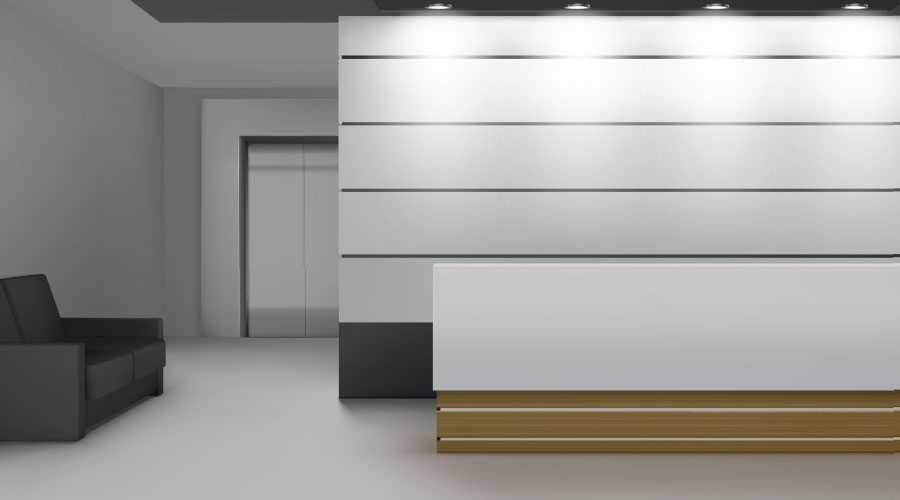Healthcare facilities are still trying to shake the old image of sterile and cold environments. Furniture as well is being shaped by this desire to make healthcare settings more inviting. These units also have to be durable and high performing so they can maintain a welcoming and comforting look for many years.
In this manufacturer roundtable, Healthcare Facilities Today spoke with furniture and textile manufacturers about new trends that are changing how patient comfort is balanced with durability and function.
What trends are you seeing when it comes to balancing patient comfort with durability and functionality in healthcare?
“When products have to look good, feel comfortable, perform well and last longer, the challenge designers face is how to deliver the whole package while still maintaining cost. Unique approaches to techniques using new technology can offer a solution. For example, in healthcare textiles, advanced digital printing technology can be applied to coated silicone-based fabrics to give them a convincing appearance of woven fabrics, creating a comfortable and welcoming look without sacrificing cleanability.
We’re also seeing a continuous shift towards more bio-based and recycled materials, with manufacturers introducing more bio-based high-performance products, such as coated upholstery made from corn starch.”
— Mary Holt, chief design strategist, Carnegie
“Designs that incorporate a residential aesthetic while maintaining the durability required for its application. This is often coupled with finishes and fabrics that are also more residential but maintain healthcare-grade cleanability. The look and feel of the warmth of residential elements that continue to maintain durability and cleanability is the biggest trend; light and airy in scale versus chunky and robust.
We’re also seeing more comprehensive coordination of the multiple elements within any space – from flooring to windows, wall art, furniture, as well as incorporation of biophilic elements. Again, the technology available through textiles has come so far in the last five years that it allows for better cleanability, more patterns and more colorways.”
— Cindy Lawton-Moreby, vice president of sales, Allseating / Stephanie Smith, marketing director, Allseating / Scott Leyden, sales representative, Allseating
“Over the past decade or so the design of healthcare furniture has made great strides in design innovations that have proven benefits for patients and their families as well as caregivers. As the furniture industry evolves, healthcare furniture designs manage not only performance and comfort, but also aesthetics.
With the evolution of cleaning protocols, textiles and surface materials really must stand up to frequent use of various cleaning products while providing comfort to patients and care partners. We’re seeing a lot more materials in like durable coated textiles that are cozy while also being tough and cleanable. The warm, soft feel of these finishes combined with the enhancements in seating combines the ability for clean outs with tactile and ergonomic considerations. Healthcare furniture is now both attractive and comfortable while also supporting infection control and durability that is needed in a clinical setting.
Previously, PVC/vinyl was the go-to textile for frequently cleaned surfaces. However, more recent focus on environmental sustainability led to eliminating PVC fabrics and switching to replacement materials like EPUs, thermoplastics, silicones, even bio-based plastics, durable materials that are also more environmentally conscious.
From an aesthetic standpoint, as newer materials are developed, not only are we seeing more sustainable materials, we’re seeing much more delightful color palettes and surface textures, more interesting patterns and the ability to use woven textiles where appropriate. All of which stand up to hospital-grade cleaners with moisture barriers so that materials don’t get transmitted through to the foam or the frame of the furniture.
All this leads to, I think, a revolution in healthcare design where the aesthetics are very good. It becomes a place that is not apart from the sort of places you want to be in or go to. But it really does embody those spaces that are attractive to people, spaces that are inviting folks to incorporate healthcare into their lives. It's not a place apart, it's a place of integration into your life.”
— Rod Vickroy, Assoc. AIA, RID, LEED AP, vertical brand segment manager, Haworth
Jeff Wardon, Jr., is the assistant editor for the facilities market.

 Making the Energy Efficiency Case to the C-Suite
Making the Energy Efficiency Case to the C-Suite How to Avoid HAIs This Flu Season
How to Avoid HAIs This Flu Season